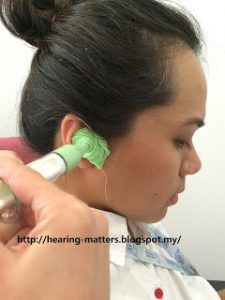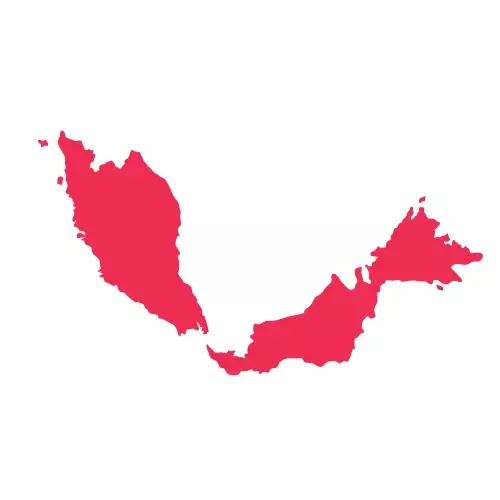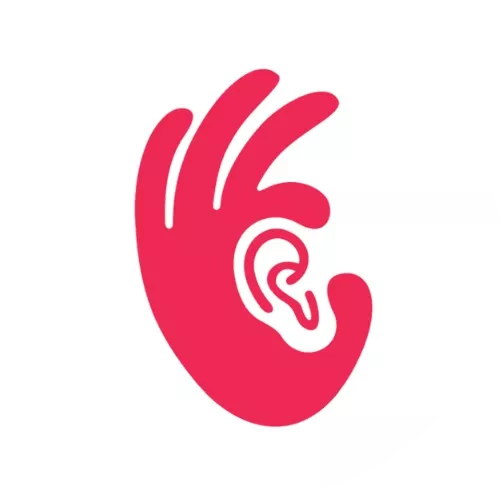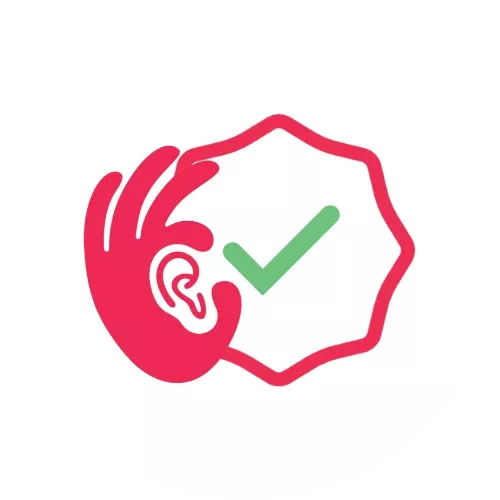
WHAT ARE EAR IMPRESSIONS?
Ear impressions are the “casts” taken individually from each person’s ear. The earmoulds for behind-the-ear (BTE) hearing aids and the custom-made hearing aids, including in-the-ear (ITE), in-the-canal (ITC) and completely-in-the-canal (CIC) hearing aids are derived from the ear impressions. Therefore, taking ear impressions is a very important step in the prescription of hearing aids. A good ear impression would ensure a hearing aid fits properly and comfortably in a person’s ear.
APAKAH ITU CAP TELINGA?
Cap telinga merupakan model telinga yang diduplikasikan khas daripada telinga setiap orang. Cap telinga tersebut akan dijadikan acuan bagi pembentukan acuan telinga untuk alat bantu dengar jenis behind-the-ear (BTE) atau penutup bagi alat bantu dengar jenis in-the-ear (ITE), in-the-canal (ITC) dan completely-in-the-canal (CIC). Oleh sebab itu, pengambilan cap telinga merupakan satu prosedur yang amat penting dalam preskripsi alat bantu dengar. Cap telinga yang halus boleh menjanjikan alat bantu dengar ditempatkan dengan betul dan selesa dalam telinga seseorang.
WHAT ARE THE STEPS OF TAKING EAR IMPRESSIONS?
BAGAIMANA CAP TELINGA DIAMBIL?
Step 1: Getting medical clearance
Prior to taking ear impressions, a client would need to make sure he has no ear disease, infection and operation in the past 90 days. The client would also need to be certain that he has no itchiness, pus, wound, etc. in his ears at present. Clients with any symptoms mentioned above are not encouraged to proceed with ear impressions taking.
Langkah 1: Pelepasan daripada masalah kesihatan
Seseorang klien sepatutnya tidak mempunyai penyakit atau jangkitan telinga dan tidak menjalani pembedahan telinga dalam 90 hari sebelum pengambilan cap telinga. Selain itu, klien tersebut sepatutnya tidak mengalami kegatalan telinga dan tidak mempunyai nanah dan luka dalam telinga sebelum cap telinganya diambil. Klien yang mempunyai gejala-gejala tersebut tidak digalakkan untuk menjalani prosedur pengambilan cap telinga.
Step 2: Examination of the outer ear
An audiologist would examine the client’s outer ear, including pinna, ear canal and eardrum using an otoscope before he take ear impressions for the client. The audiologist would make sure there is no pus, infection or redness in the ear. In case of excessive or impacted earwax found in the client’s ear, the audiologist would refer the client for earwax cleaning. If any anomaly is found with the ear canal structure, the audiologist would also take extra care when taking ear impressions for the client.
Langkah 2: Pemeriksaan telinga luar
Sebelum mengambil cap telinga untuk seseorang klien, audiologis akan memeriksa telinga luar yang termaksud cuping, salur dan gegendang telinga klien tersebut. Audiologis akan memastikan tiada nanah atau jangkitan dalam telinga klien tersebut. Sekiranya terjumpa tahi telinga yang terlampau banyak, audiologis akan merujuk klien tersebut untuk pembersihan telinga. Selain itu, audiologis akan mengambil langkah berjaga-jaga semasa mengambil cap telinga sekiranya struktur salur telinga klien tersebut didapati tidak normal.
Step 3: Taking ear impressions
Langkah 3: Pengambilan cap telinga
i) Insert a cotton or foam block until the second bend of the ear canal.
Masukkan satu blok kapas atau cebisan span sehingga selekoh salur telinga yang kedua.
ii) Mix one scoop of A material with one scoop of B material.
Campurkan sesudu bahan A dengan sesudu bahan B.
iii) Place the mixed impression materials inside a syringe.
Letakkan adunan bahan A dan bahan B ke dalam satu picagari.
v) Insert the syringe inside the ear canal and then inject the material into the ear canal.
Letakkan picagari dalam salur telinga dan salurkan adunan tersebut ke dalam salur telinga.
vi) Fill the pinna with the material after the ear canal is filled up.
Penuhkan bahagian luar telinga dengan adunan tersebut setelah salur telinga diisi.
vii) Gently touch the material after a few minutes to check its hardness.
Tekan adunan tersebut dengan perlahan-lahan selepas beberapa minit untuk memeriksa kekerasannya.
viii) Remove the material after 10 minutes or when it hardens.
Keluarkan adunan tersebut selepas 10 minit atau setelah adunan tersebut menjadi keras.
ix) Re-inspect the ear with the otoscope to be certain that the ear is clear of the material.
Periksa telinga sekali lagi dengan menggunakan otoskop untuk memastikan tiada adunan yang tertinggal dalam telinga.
x) These ear impressions will be sent to the lab for custom made ear moulds and hearing aids.
Cap telinga ini akan dihantar ke makmal untuk diproses sebagai acuan telinga atau alat bantu dengar.
(Special thanks: We would like to thank 20dB Hearing’s audiologist and assistant for volunteering in the photo taking process. A heartfelt thanks to the audiologist, Elaine Yu, for wording this post.)
 ISO认证公司
ISO认证公司
 国际支持
国际支持
 定制听力解决方案
定制听力解决方案
 注册MAHP听力学家
注册MAHP听力学家
 满意保证
满意保证
 最佳客户服务
最佳客户服务
 最佳企业社会责任
最佳企业社会责任